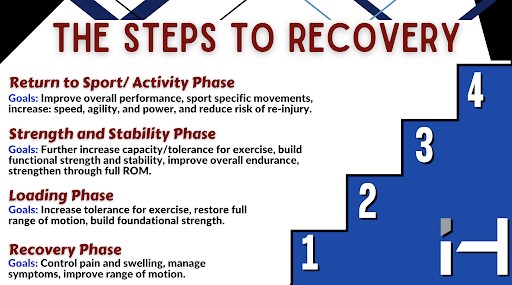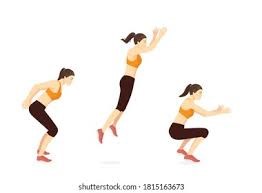If you are a runner, like myself, chances are you’ve probably sustained a running-related injury. As I mentioned in my last blog, “The Big 6 Running-Related Injuries and How PT Can Help,” 75% of runners a year will sustain a running-related injury. I personally recall dealing with a proximal hamstring tendonitis injury when training for the NYC marathon back in 2021 and it temporarily put a wrench in my training plan. I remember thinking to myself “How am I going to train for the rest of my program with this pain/discomfort?” Well, if I’ve learned anything about injured runners, it’s that the last thing they want to hear is “You need to stop running.” Unless of course, the runner in question sustained a stress fracture, in which case, they do need to stop running! Lucky for me, I was surrounded by knowledgeable Physical Therapists who were able to guide me back to pain-free running.
So you’ve sustained a soft-tissue running-related injury, now what? After having a formal evaluation by your Physical Therapist, you can work with them towards Iron Health’s 4 steps to recovery:

- Recovery Phase Goals
The goals for the Recovery Phase of treatment are to “put out the fire” with pain/symptom management and to improve the runner’s range of motion. During the acute, or early stage of an injury, runners should implement the PRICE protocol. This involves Protection, Rest, Ice, Compression and Elevation. This will typically involve temporarily stopping or dialing back on mileage to prevent further injury as well as active range of motion exercises to help restore full range. Your physical therapist can also recommend other modalities during this phase such as KT tape, temporary orthotics/compression sleeves, foam rolling, and acupuncture/dry needling.

- Loading Phase
The goals for the Loading Phase of treatment are to increase the runner’s tolerance for targeted exercises aimed to help with muscle imbalances, restore the runner’s full range of motion, and build foundational strength. Certain running-related injuries often present with common muscle imbalances that your Physical Therapist can evaluate. For example, a runner with knee pain may present to PT with weak hip abductors. Weakness in these muscles is often associated with excessive medial and internal rotation of the thigh, causing increased stress at the knee. Therefore, targeted hip strengthening exercises may be incorporated into the runner’s rehab program. The Loading Phase can also involve manually resisted and independent isometric exercises to safely activate and strengthen muscles that may be injured.

- Strength and Stability Phase
The goals for the Strength and Stability Phase of treatment are to further increase a runner’s tolerance for exercise, build functional strength and stability, improve overall endurance, and strengthen through full range of motion. During this phase, your Physical Therapist may have a runner progress in intensity and duration of their exercises and transition to strengthening that incorporates more functional patterns of movement that mimic the activity of running. Your Physical Therapist may also incorporate more proprioceptive exercises during this phase. Our proprioceptors are sensory receptors that help us perceive our body’s position and movement in space. These proprioceptors can be damaged with certain soft-tissue injuries. Therefore, during this phase of recovery, your Physical Therapist can guide you in proprioceptive re-education for effective lower extremity control and joint stability.

- Return to Sport (Running)
The goals for the Return to Sport phase of treatment involve improving overall performance and sport-specific movements, increasing speed, agility, and power, and reducing the risk of re-injury. For runners, this phase of treatment is when plyometrics and eccentric strengthening are key. Running is a high-intensity sport that requires high repetitions at high loads. Plyometric exercises can help runners develop power (strength and speed) and improve efficiency. Eccentrics are also important during this recovery phase as eccentric muscle fatigue, especially in the hamstrings, is often associated with endurance running.

So where do we stand with actually running during these recovery phases? Firstly, it is important to understand that each individual is unique and here at Iron Health, we strive to promote individualized treatment plans to meet the needs of our patients. Once a runner is past the recovery phase of treatment, they may be able to continue running at a reduced intensity based on their injury and symptoms. They may also be recommended to follow the “10% rule” in which the runner increases their weekly mileage by no more than 10% of their previous week. Depending on the runner’s presentation, they may also be recommended for a run/walk program to re-introduce running.
All runners should also be educated to stop running if: 1) Their pain increases at any point during their run; 2) Their joint pain lasts longer than 24 hours; and, 3) Their pre-existing pain (less than 3/10 on the pain scale) increases or continues into the next day. Runners should stop running until pain-induced compensations disappear. Lastly, just to reiterate, a runner should NOT be running if they have or suspect they have a stress fracture.
If you’re injured and want to get back to running, I would encourage you to visit one of the Physical Therapists here at Iron Health. We will work together to tailor a program to meet your specific needs and goals and get you back to participating in the sports you love!

